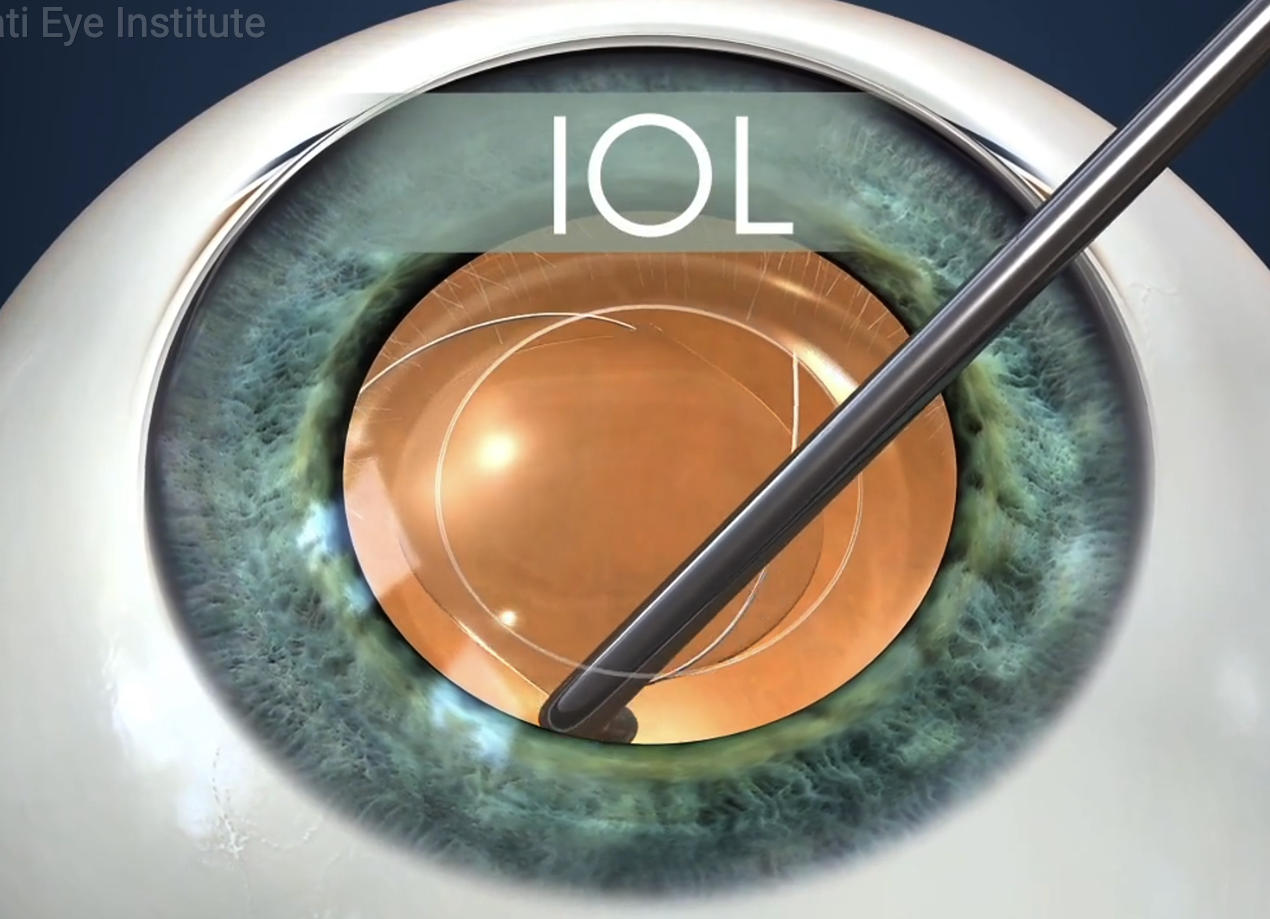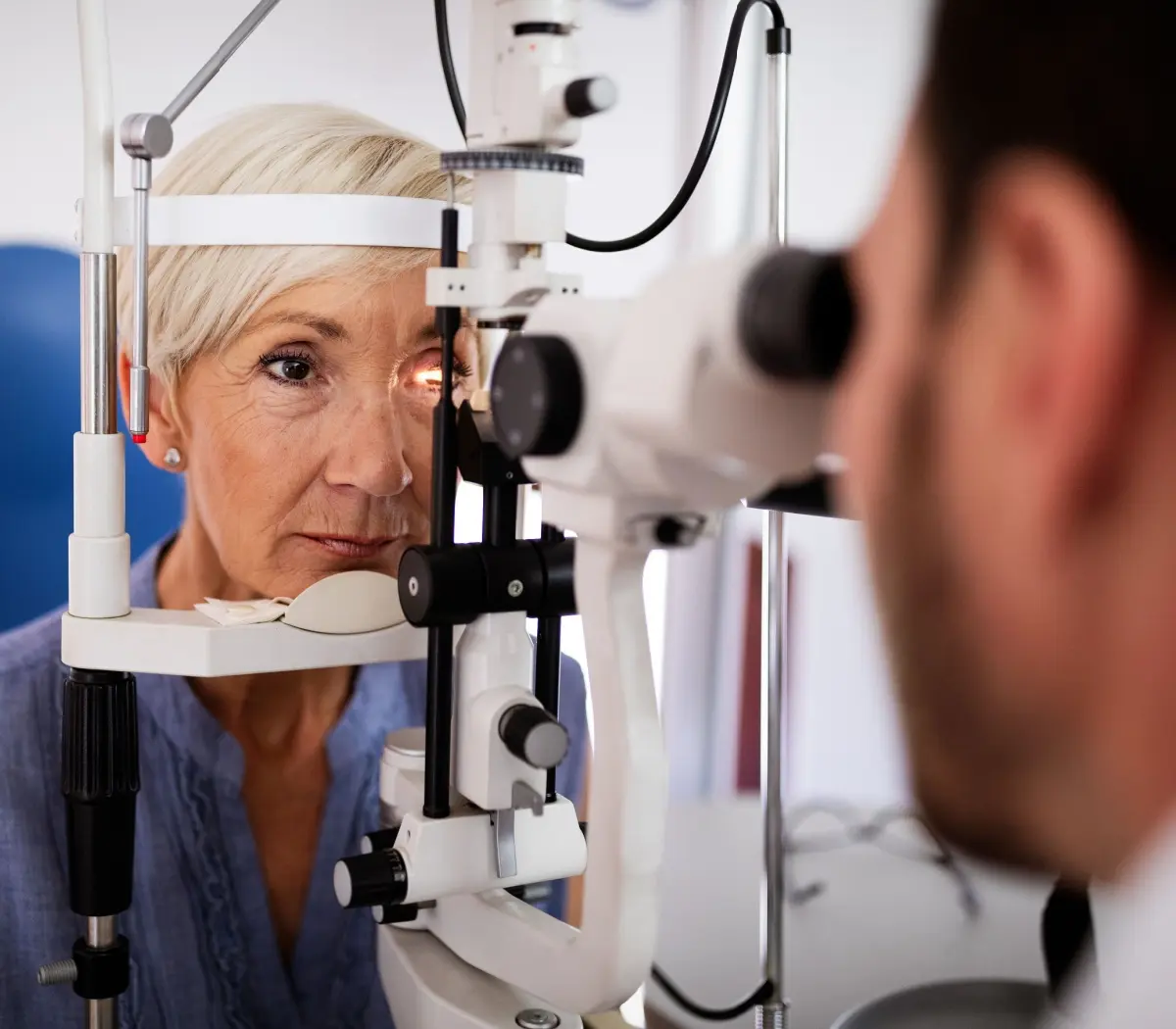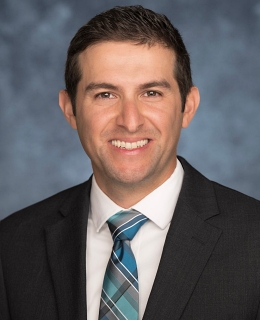
Secondary Cataracts
Secondary Cataract is the more common name for posterior capsular opacification (PCO), a common side effect after cataract surgery where blurry vision causes people to think their cataracts have returned.

Treatment of Posterior Capsular Opacification (PCO) in Cincinnati and Northern Kentucky
Posterior Capsular Opacification (PCO) is sometimes confused with cataracts because the visual symptoms may be similar. However, once a cataract is removed, it is not possible for cataracts to return. Posterior capsular opacification is a result of clouding of a membrane that surrounds the replacement lens implanted during cataract surgery. Fortunately, PCO is easily treated using a YAG (Yttrium Aluminum Garnet) laser.

Symptoms of PCO
Symptoms of PCO are similar to the symptoms experienced with a cataract. They include:
- A gradual decrease of vision
- Vision that is blurry
- Glare around lights
- Sensitivity to sunlight
- Halos around lights
Diagnosis of a Posterior Capsular Opacification
After a thorough medical examination of the eyes, the following tests may be conducted to confirm diagnosis:
- Dilated eye examination
- Slit-lamp examination
- Visual acuity assessment
- Glare testing
YAG Laser Treatment After Cataract Surgery
If your examination confirms that you have posterior capsular opacification, laser surgery may be recommended. This procedure uses a YAG (Yttrium Aluminum Garnet) laser to open a window in the lens capsule to restore clear vision. Posterior capsulotomy is a painless outpatient procedure that takes less than 15 minutes. Most patients experience an improvement in vision very quickly, however this may vary depending on the extent of the clouding experienced and the patient’s overall eye health. Patients should be able to resume normal activities almost
Trusted Source
What is a Posterior Capsulotomy?
American Academy of Ophthalmology
Go to Source
immediately.
Blurry Vision After Cataract Surgery?
If you are experiencing poor or blurry vision after cataract surgery, it is possible that YAG laser treatment by an experienced ophthalmologist could restore clarity to your vision in as little as 15 minutes. For more information on posterior capsular opacification, please contact one of CEI’s convenient locations in Cincinnati or Northern Kentucky.
1 American Academy of Ophthalmology. What is a Posterior Capsulotomy? Available: https://www.aao.org/eye-health/treatments/what-is-posterior-capsulotomy. Accessed October 2, 2020.
The doctors at Cincinnati Eye Institute have either authored or reviewed the content on this site.

































